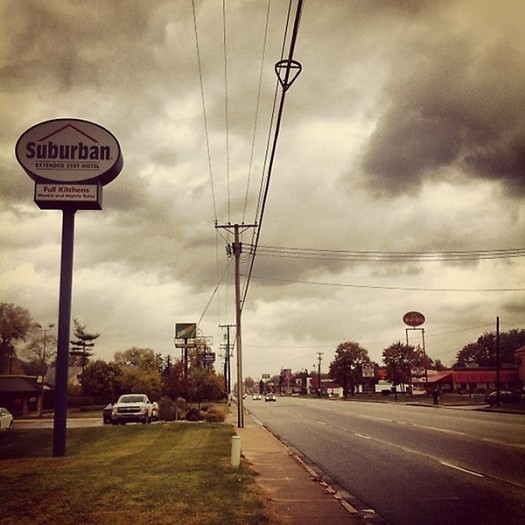A Placemaking Journal
By-Passing Tomorrow for Easy Implementation Today
Chuck Marohn, and his Strong Towns message, is revolutionary in that he is a credible transportation professional who is single-handedly taking on the transportation profession. And winning.
Last year, Walt Chambers of Great Streets San Diego, and I brought Chuck to San Diego for one of his now ubiquitous Curbside Chats. In short, the Strong Town message is to be cognizant of the long-term ramifications of short-term infrastructure investments, especially ones that simply support auto-oriented lifestyles.
Here in Southern California, we suffer from a local medical condition I’ve coined our Infrastructure Deficit Disorder (IDD).
My city is falling apart. Sewers leak into stormwater outfalls during every rain event. Then our ocean is polluted for days afterwards. Our sidewalks and overly wide streets are crumbling, and our parks have been deficient since John Nolen identified the problem in his 1926 Comprehensive Plan for San Diego. Our Community Plans are 30 years old, doing little to provide predictability in the development process, meaning every new project of any scale is seen as a threat to a fantastic, yet precarious, quality-of-life. And, because we still measure traffic by the archaic Average Daily Trips generated by singular Land Uses, all new mitigation for mixed-use, walkable neighborhoods ends up being signalized intersections to facilitate the wider, faster streets required to avoid the feared LOS F (traffic traveling slower than 30 mph) performance rating.
The net result: We’re keeping our neighborhoods from ever being mixed-use and walkable.
As we enter year five of our economic malaise, our city is finally digging into our Capital Improvement Plan process in relationship to trying to solve for an acute case of IDD. Today, short-term politicians are looking to long-term infrastructure investments for short-term successes, thereby making bad decisions inevitable. I recommend leaders look in two places:
First, to generate revenue: Last November, the citizens of El Paso successfully passed a neighborhood-focussed Quality-of-Life bond with an amazing 70% voter approval. This percentage is noteworthy as California necessitates a Super Majority to raise taxes. The El Paso story started with a public-private partnership to fund the initiative, linked with a visually compelling Vision Plan, and new TOD framework to be implemented by more predictable place-based policies and FBC tools that we here at PlaceShakers recommend, well, constantly.

Second, to be fiscally responsible: We should maximize our prior investments and revisit standardized Street Classifications, Level of Service thresholds, and Average Daily Trip generation assumptions. Our urban neighborhood street and park infrastructure deficits are based upon suburban assumptions. 1 acre of park per 1,000 people is an arbitrary measurement and Street Classifications and ADTs are based upon separated Land Uses to be calculated; all while we are trying to build more humane, walkable, bikeable, transit-oriented and drivable standards right now… rather than our out-dated 20th century auto-oriented crap.

Case Study: A recent court decision struck-down a $65 million auto by-pass bridge to be built on our 98-year old iconic Cabrillo Bridge in Balboa Park. A local city council member is working hard to circumvent the decision. However, I notice that only a select few of my professional colleagues are terribly disappointed, as the alternative unfairly trades altering the beautiful Cabrillo Bridge in order to fix the Plaza de Panama, which is currently an atrocious parking lot about 300 feet away.
A beloved local philanthropist, billionaire Dr. Irwin Jacobs of Qualcomm, is poised to up $45 million to construct the by-pass leading to a grade separated stroad feeding a parking garage. We all know the political will to get the by-pass built, despite the ruling and public opposition, is a political decision to both honor Dr. Jacob’s philanthropic past and access future financial favor. However, the long-term maintenance of the grade-separated auto by-pass is unfunded. The ‘free’ money is simply to construct the new by-pass.
Short-term pleasure. Long-term pain.
Bottom line, Cabrillo Bridge should be closed to automobiles, plain and simple. The only reason it is not today is due to the local neighborhood’s fear of people parking on their streets. Meanwhile, the Millennial generation is eager to bike, tram, bus and walk into the Plaza de Panama from the west (and continue to drive, bus, tram, bike and walk from east as well). However, if the Jacobs by-pass is built, cars will remain in the heart of Balboa Park for another generation or two. Therefore, in this legal lull, Mike Stepner and I designed this short-term plan to open the Plaza de Panama to pedestrians so we can await the dedication of Cabrillo Bridge and ultimately the entire plaza to peds, bike, buses, trams and whatever else we come up with in the future. To quote John Nolen from his 1926 Plan, “Among the wrong methods of getting action in planning… is the attempt to carry out too big a scheme at one time.”
To quote Chuck Marohn: “Our expectation to pay only a portion of the full costs of growth has led to a scarcity of resources.” If we limit the potential for a mixed-use, walkable future with mid-century, conventional ADT counts, auto-oriented by-pass bridges, and separated Land Use planning, then we are destined to remain in IDD intensive care.
Call it the By-Pass to Nowhere.
–Howard Blackson
If PlaceShakers is our soapbox, our Facebook page is where we step down, grab a drink and enjoy a little conversation. Looking for a heads-up on the latest community-building news and perspective from around the web? Click through and “Like” us and we’ll keep you in the loop.








